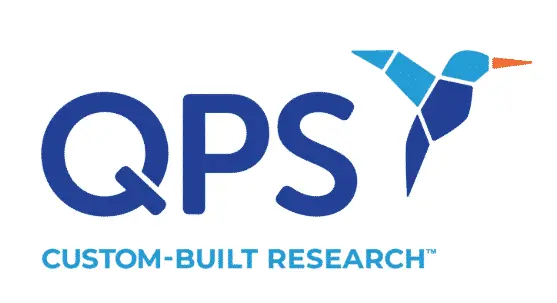Dermatology Specialists
Dermatology research is near and dear to our hearts at QPS, with our Clinical sites having extensive experience conducting a wide range of Dermatology studies. We have done many first in human trials to assess irritation and sensitivity scores. We have staff that are trained on skin scoring and cross trained to avoid interrater variability, and we also have physicians and nurse practitioners available around the clock to make timely assessments and treatment plans for any unexpected reactions. In later phases, we have access to patient populations that would benefit from these medications eg. Psoriasis. We have studied topical formulations (foams, creams, lotions, ointments, gels, etc.) that target dermatologic conditions (skin diseases), as well as dermal and transdermal delivery systems (TDDS) that are designed to treat systemic medical conditions using the skin as the route of administration. More information can be found on the Transdermal Research page of this website.
Leveraging our large volunteer database and in-house marketing agency to target actively interested clinical trial populations ensures that QPS is consistently a top enroller. QPS has conducted almost 100 clinical trials in dermatology. We use a central IRB to ensure full regulatory compliance. Our full-time quality assurance and regulatory teams, rigorous standard operating procedures and experienced study coordinators consistently ensure quality results.
Partner with QPS to fast-track your next dermatology study. Contact Us Today!
How are clinical trials contributing to dermatology treatment strategies?
Dermatologic clinical trials are crucial for advancing treatment approaches in various skin conditions. By rigorously evaluating safety, efficacy, and patient outcomes, clinical trials inform evidence-based practices and propel progress toward finding effective treatments for the millions of people who suffer from these ailments.
Key aspects of dermatology trials include:
- Scientists explore potential drug candidates in laboratory settings. They assess safety, efficacy, and mechanisms of action.
- Dermatology drug candidates range from small molecules to biologics, and from topical products to oral medications.
- Animal studies help identify promising compounds and understand their effects on skin health.
- Dermatology trials focus on conditions like psoriasis, atopic dermatitis, and rosacea. These trials evaluate drug safety and efficacy in humans.
- Trials involve diverse patient populations, rigorous assessments, and objective endpoints, such as, skin appearance and reduction in the size of skin lesions.
- Regulatory agencies like the US FDA and the EMA review all of the available preclinical and clinical data to decide if a drug can be marketed.
- Approval requires compelling evidence of safety, efficacy, and positive benefit to risk ratio.
- After approval, when a drug is launched onto the market, ongoing monitoring (post-marketing surveillance) is often used to ensure safety and effectiveness in the broader population.
- These studies are observational, not interventional. Data is gathered as people take the medication in a “real-world” setting.
- Adverse events are cataloged, and label updates may occur based on this real-world data.
Dermal and transdermal drug delivery systems (DTDDS)
Whereas dermatologic topical formulations (foams, creams, lotions, ointments, gels, etc.) target skin diseases, topical transdermal delivery systems (TDDS) are designed to treat systemic medical conditions or localized joint or muscle conditions, using the skin as the route of drug delivery. Transdermal drug delivery offers important advantages over other routes of administration. It is particularly useful for circumventing liver first-pass metabolism, as an alternative to oral products, for non-invasive localized muscle and joint treatments, to improve and simplify patient compliance, and to allow for discontinuation of drug delivery by removing the patch in the event of adverse drug reactions. TDDS have become successful alternatives for delivering medications to young children, the elderly and the infirm.
Transcutaneous technologies and devices
Apart from traditional transdermal patch products and topical semi-solids, extensive work is ongoing to develop transcutaneous technologies and devices, most of which are intended to disrupt or bypass the stratum corneum, the rate-limiting absorption barrier of the skin. Such techniques currently in development include microporation, laser ablation, radiofrequency (iontophoresis, sonophoresis, electroporation), thermal technologies (drug delivery augmented with heat), and microneedle systems. These diverse developing technologies are being investigated for use with a wide variety of difficult-to-deliver drug compounds and macromolecules (e.g. parathyroid hormone, insulin, vaccines, and biologics), and for drugs requiring rapid delivery (e.g. lidocaine, fentanyl and diclofenac).
Several of these systems are already available over the counter (OTC) in various countries, including microneedle rollers, and iontophoresis and sonophoresis systems, which are predominately being used for cosmetic and anti-aging treatments and as therapy for localized sports injuries.
What classes of drugs are being developed for use in dermatology?
In dermatology, drug development is advancing with a focus on innovative therapies. Here are some key classes of drugs being developed:
1. Antifungals
- Novel antifungals are being developed to treat fungal infections of the skin.
2. Antivirals
- Novel antivirals are being explored to treat viral infections of the skin.
3. Biologics
- Derived from living organisms, biologics selectively inhibit or stimulate specific components of the immune system.
4. Immunomodulators
- Immunomodulators work by modulating the immune system, either stimulating it or suppressing it.
5. JAK Inhibitors
- These target Janus kinase enzymes involved in immune responses.
6. Immunomodulators
- Small molecules are gaining prominence in dermatology due to their targeted action.
How is cell and gene therapy advancing dermatology treatment?
Cell and gene therapy is making significant strides in dermatology treatment. These therapies represent potential exciting breakthroughs, addressing unmet needs in the following dermatological disorders. QPS has extensive preclinical and bioanalytical experience with cell and gene therapy development, which can be explored on our website www.qps.com.
Overall, cell and gene therapies represent a paradigm shift in dermatology, offering potential cures, improved outcomes, and personalized treatments for a wide range of skin disorders. As research progresses and technologies evolve, these therapies are expected to play an increasingly significant role in dermatological practice.
Have any cell and gene therapies been approved for use in dermatology?
No FDA-approved cell or gene therapies currently exist for dermatologic conditions.
However, there has been remarkable progress in the field over the last few decades. Here are some examples of cell and gene therapies currently in development or under investigation for dermatologic conditions:
1. Gene therapies are in development for these indications
a. Alopecia, Cosmetic Dermatology, Cutaneous T-cell Lymphoma (CTCL), Epidermolysis Bullosa (EB), and, Psoriasis.
2. Cell therapies are in development for these indications
a. Atopic Dermatitis (Eczema), Psoriasis, Transplantation and Regenerative Medicine, Vitiligo (variably pigmented skin), and Wound Healing.
These therapies are at various stages of preclinical and clinical development, with some already showing promising results in early-phase trials. The field of dermatology is rapidly evolving with advancements in cell and gene therapies offering potential new treatment options for a range of skin disorders.






